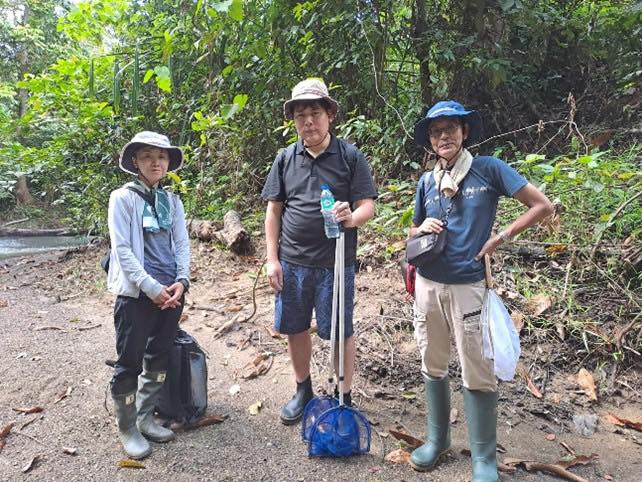Western Philippines University (WPU), in collaboration with esteemed local and international partners, is proud to spearhead the “𝙋𝙧𝙚𝙡𝙞𝙢𝙞𝙣𝙖𝙧𝙮 𝙨𝙪𝙧𝙫𝙚𝙮 𝙩𝙤 𝙚𝙨𝙩𝙖𝙗𝙡𝙞𝙨𝙝 𝙖 𝙘𝙤𝙡𝙡𝙖𝙗𝙤𝙧𝙖𝙩𝙞𝙫𝙚 𝙧𝙚𝙨𝙚𝙖𝙧𝙘𝙝 𝙤𝙣 𝙛𝙧𝙚𝙨𝙝𝙬𝙖𝙩𝙚𝙧 𝙖𝙣𝙙 𝙚𝙨𝙩𝙪𝙖𝙧𝙞𝙣𝙚 𝙛𝙞𝙨𝙝 𝙛𝙖𝙪𝙣𝙖 𝙤𝙛 𝙩𝙝𝙚 𝙋𝙝𝙞𝙡𝙞𝙥𝙥𝙞𝙣𝙚𝙨: 𝙏𝙤𝙬𝙖𝙧𝙙 𝙚𝙡𝙪𝙘𝙞𝙙𝙖𝙩𝙞𝙤𝙣 𝙤𝙛 𝙩𝙝𝙚 𝙡𝙖𝙧𝙫𝙖𝙡 𝙙𝙞𝙨𝙥𝙚𝙧𝙨𝙖𝙡 𝙢𝙚𝙘𝙝𝙖𝙣𝙞𝙨𝙢 𝙤𝙛 𝙙𝙞𝙖𝙙𝙧𝙤𝙢𝙤𝙪𝙨 𝙛𝙞𝙨𝙝 𝙖𝙡𝙤𝙣𝙜 𝙩𝙝𝙚 𝙆𝙪𝙧𝙤𝙨𝙝𝙞𝙤 𝘾𝙪𝙧𝙧𝙚𝙣𝙩.”
This initiative, funded by the Nagao Natural Environment Foundation, aims to uncover the mysteries of larval dispersal mechanisms in diadromous fish, contributing to the conservation and sustainable management of aquatic biodiversity.
Leading the WPU team are Dr. Herminie P. Palla and Dr. Rodulf Anthony T. Balisco of the College of Fisheries and Natural Sciences (CFiNS). They are joined by collaborators from the Okinawa Institute of Science and Technology, Hokkaido University, Chiba’s Natural History Museum, BFAR Region 2, Cagayan State University, and Mariano Marcos State University.
The research team recently explored Palawan, Cagayan, and Ilocos Norte from November 22 to December 1, 2024, conducting courtesy calls with LGUs and BFAR offices, specimen collection, market surveys, and eDNA sampling. Notable highlights include visits to the Cabayugan River system near the Underground River and studying fisheries of goby larvae in Northern Luzon.
#CFiNSExcellence#PisikPisik#SwimFastCFiNs#TatakWPU











